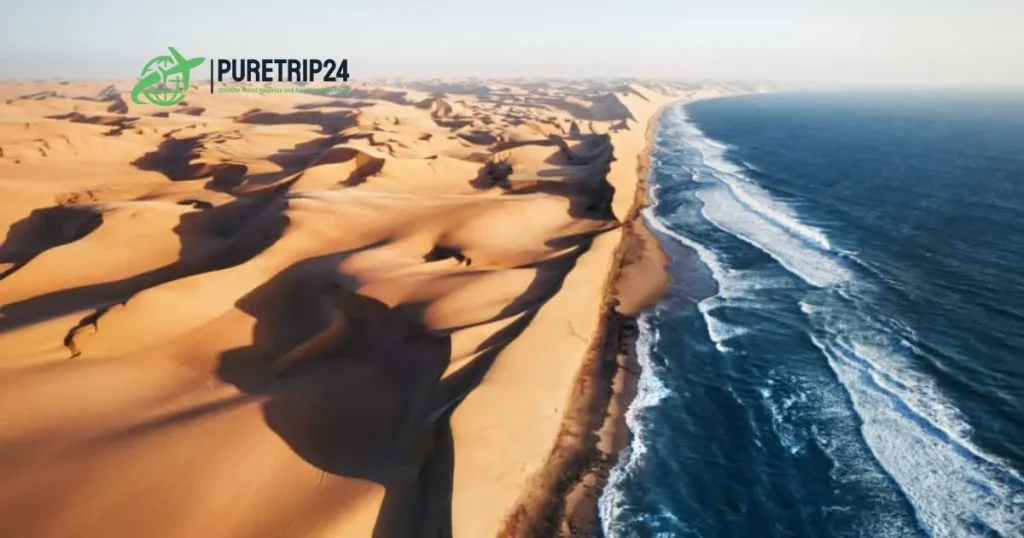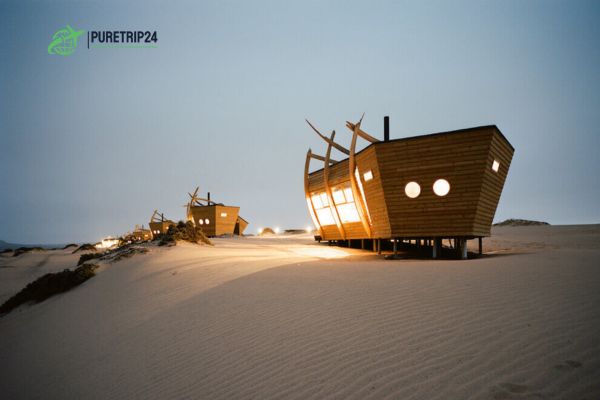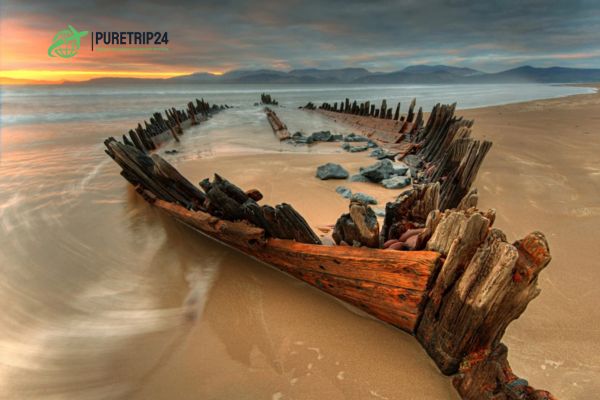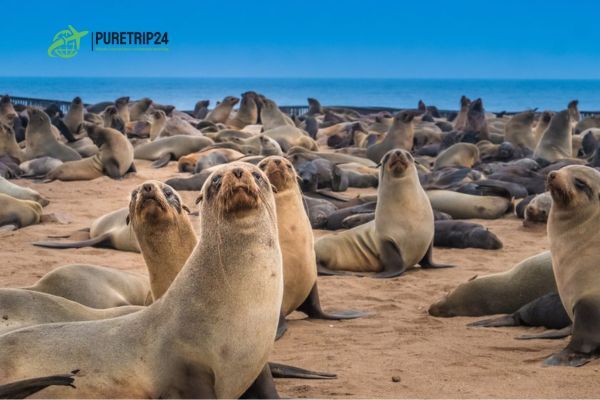Named after its eerie shipwrecks and whalebones, the Skeleton Coast National Park in Namibia comprises a hauntingly beautiful coastal stretch famous for dramatic landscapes and rich wildlife. Covering almost 16,000 km² (6,200 square miles), this distant and long-winded patch of land is one of Namibia’s most incredible places. For thrill-seekers, those who appreciate nature and photographers alike pick the Skeleton Coast National Park. In the following article, a visitor to Portugal and Spain will be directed on where they should go with what their choice of attractions are along with activities that you can find over these places.

skeleton coast map
A national park in Namibia, Skeleton Coast Namibia lies along the dangerous Atlantic coast. Tsetse where bordered by harsh desert. The park extends from the Kunene River in the north to the Swakop River in the south.
Transportation Options to Skeleton Coast National Park
Self-Drive:The way is to rent a 4×4 vehicle and visit the Skeleton Coast. It is tough to reach the roads but you get an untold privilege and freedom of finding beautiful places on your way! The skeleton bay namibia is accessible from a number of points including Henties Bay and Palmwag.
Guided Tours – There are a few different tour companies that offer guided tours to the Skeleton Coast with all accommodation and meals included along with guides who can teach you about the history of this location as well as its wildlife.
Where to Stay
Lodges and Campsites
From luxury lodges to basic campsites, accommodations near Skeleton Coast run the gamut and satisfy every type of traveler:

Mowe Bay Lodge: Inside the park, with fabulous views of the wild Atlantic Ocean. Perfect for visiting the park!
Skeleton Coast Camp This luxury camp has beautiful tented accommodations to give you a high level of comfort in the wild.
Camping:There are camping grounds available within the park and in a few nearby areas for traveler looking to embrace their adventurous side. Backcountry campsites are usually minimal in services, that can help you relish the natural surroundings.
skeleton coast safaris guide at puretrip24
Explore Shipwrecks
Shipwrecks announce the area’s infamy; many a vessel met her doom at these treacherous shores, which today are called the Skeleton Coast. To peer into the maritime history of this region, try scuba diving or snorkeling around some of these creepy wrecks,
skeleton coast shipwrecks

The Eduard Bohlen:This famous wreck is one of the most photographed, having been grounded in 1909 along this part of the coast.
Dunedin Star – This 1940s wreck is frequently visited and can be accessed through tours.
Wildlife Watching
Much of the Skeleton Coast is a harsh wasteland, but it’s also teeming with wildlife. The region provides habitat for numerous species and communities including;
Cape Fur Seals: One of the largest colonies of Cape fur seals in the world — many thousands strong, a sight you can see south from the park at Cape Cross Seal Reserve.
Desert-adapted Elephants: These are elephants that have adapted to the harsh environment and can be seen in the eastern parts of the park.
Bird Watching:The area in itself is a bird lovers paradise, where flamingos and pelicans make regular appearances near the coastal lagoons.
Scenic Drives
Some of the most stunning drives are in this park, including some amazing dunes and salt pans with beautiful coastal trails. A few suggested paths include:
Hoarusib River Valley:A beautiful drive through a river valley – no flowing water here of course, but plenty of ancient rock formations and the special desert setting.
Skeleton Coast Road — The iconic Skeleton Coast road that runs along the coast with places to stop at lookouts or explore hidden beaches.
Cultural Experiences
At least some of the time, it will simply give your trip more depth to engage with local communities. The Himba people who live very traditional lives also occupy this area. If you are visiting Himba for the first time, it is worth a visit to get an initial view of their cultural custom and lifestyle.
Essential Tips for Travelers
Best Time to Visit
The best time to visit Skeleton Coast National Park is in the peak season, which runs from May through October. With optimum temperatures and fewer chances of rain, it is convenient to explore the attractions in these months.
Pack Accordingly
Wear layers of clothing:it is usually really cold in the morning and it can get warm during the day. By day, the answer is virtually always lightweight, breathable clothing; by night something a bit cozier to ward off damp evenings.
Sun Protection:Because the sun can be strong, wear an SPF to protect yourself from UV rays as well as sunglasses and a wide-brimmed hat.
Water & Snacks – Be sure to have your fill of water and snacks, particularly if you’re going hiking or out into the wilderness. The air is dry, you need to keep hydrated.

RespectEnvironment
Skeleton CoastNational Park area Observe Leave No Trace ethics: give wildlife their space, remain on designated trails, and carry out all your trash. Also, keep in mind the fragile ecosystems of this area.
Safety Considerations
As stunning as Skeleton Coast may be, it is important to keep safety as the main priority:
Remain on Established Roads:A number of locations in the park can be tough to access and maneuver. Do not leave the roadway into a maze.
Wildlife Encounter: Keep a safe distance from wildlife, do not walk up to animals, especially elephants and seals.
Travel with a Friend:If you can, explore the park in pairs or book a guided tour along isolated areas.
Conclusion
Trip to the Skeleton Coast National Park is a place of alive sculptures that Mother Nature has been very cruel to, wildlife and history intersect. Home to shipwrecks, wildlife, and a cultural experience that is among the most remote in the country. Enjoy what nature has to offer (and be nice and clean up!) as you travel. Start packing your bags and head to PureTrip24 for more travel tips! Com is your best source for finding out more about the world!
